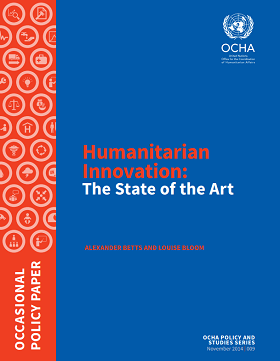Humanitarian Innovation: The State of the Art
The humanitarian system faces grave challenges, as record numbers of people are displaced for longer periods by natural disasters and escalating conflicts. At the same time new technologies, partners, and concepts allow humanitarian actors to understand and address problems quickly and effectively. To contend with these growing, and changing, demands, organizations are increasingly exploring the idea of “humanitarian innovation,” which draws upon concepts from the private sector to adapt and improve the humanitarian system. As a sign of its importance, “Transformation through Innovation” will be one of four themes of the 2016 World Humanitarian Summit.
Humanitarians have used the term “innovation” to refer to the role of technology, products and processes from other sectors, new forms of partnership, and the use of the ideas and coping capacities of crisis-affected people. However, as with many emerging ideas, use of the term in the humanitarian system has lacked conceptual clarity, leading to misuse, overuse, and the risk that it may become hollow rhetoric.
A better understanding of the potential and purpose of the innovation cycle and an innovation mindset can bring great benefits to the humanitarian system. This paper sets out to develop a common language and framework as a basis for dialogue, debate, and collaboration. The purpose is not to provide a definitive or comprehensive account but to offer ideas and examples to inspire further discussion.
Each section of the paper highlights an aspect of the concept:
- the rise of humanitarian innovation and the innovation
ecosystem; - the unique challenges of humanitarian
innovation; - the innovation cycle in practice;
- the role of crisis-affected people; and
- advancing the debate.
